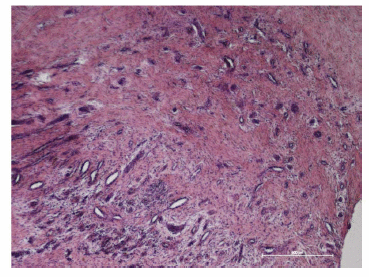Comparative Study of Clinical and Radiological Outcomes of Unconstrained Bicondylar Total Knee Endoprostheses with Anti-allergic Coating
- PMID: 22016754
- PMCID: PMC3195852
- DOI: 10.2174/1874325001105010354
Comparative Study of Clinical and Radiological Outcomes of Unconstrained Bicondylar Total Knee Endoprostheses with Anti-allergic Coating
Abstract
Background: Hypersensitivity reactions to implant materials have become more important in total knee replacement (TKR). The purpose of this retrospective comparative study was to evaluate the clinical and radiological outcomes of unconstrained bicondylar total knee prostheses with and without anti-allergic titanium(niobium)nitrite (Ti(Nb)N) coating.
Methods: Twenty-four patients (25 TKRs) underwent a preoperative clinical evaluation and then a postoperative evaluation after 26.2 months in the allergy group treated with coated implants (n=13 implants) and after 24.5 months in the control group treated with uncoated implants but identical geometry (n=12) using HSS, WOMAC and SF-36 scores. Radiological evaluations were performed using standard anterior-posterior (a.p.) and lateral X-rays.
Results: During follow-up two patients of the allergy group had to undergo revision surgery due to non-implant-related reasons. A comparative analysis of both study groups showed a significant difference in the HSS scores at both evaluation time points (MW test p≤0.050); these findings are remarkable since the control group had a significantly lower score preoperatively (54.0 vs 65.0 points) and a significantly higher score (82.5 vs 75.0 points) postoperatively. The preoperative and postoperative WOMAC and SF-36 scores were comparable in both groups (MW test p≥0.052), although the postoperative increase in the score for the allergy group was lower. The radiological results were comparable in both groups and were unlikely to influence the results.
Conclusions: This clinical study demonstrates the restricted outcome in postoperative function and quality of life in the allergy group compared to the control group.
Keywords: Allergy; bicondylar surface replacement; functional outcome; implant materials; radiological outcome; total knee replacement..
Figures


References
-
- Bergschmidt P, Bader R, Finze S, Ansorge S, Kundt G, Mittelmeier W. Bicondylar knee arthroplasty - influence of preoperative functional restriction on early functional postoperative outcome. Z Orthop Unfall. 2008;146:344–51. - PubMed
-
- Bader R, Mittelmeier W, Steinhauser E. Failure analysis of total knee replacement. Basiscs and methodological aspects of the damage analysis. Orthopäde. 2006;35:896–903. - PubMed
-
- Kircher J, Bergschmidt P, Bader R, et al. The importance of wear couples for younger endoprosthesis patients. Orthopäde. 2007;36:337–46. - PubMed
-
- Bader R, Bergschmidt P, Fritsche A, Ansorge S, Thomas P, Mittelmeier W. Alternative materials and solutions in total knee arthroplasty for patients with metal allergy. Orthopäde. 2008;37(2):136–42. - PubMed
-
- Thomas P. Allergologische Aspekte der Bioverträglichkeit von Titanbasisimplantaten. Biomaterialien. 2001;2:35–44.
LinkOut - more resources
Full Text Sources
